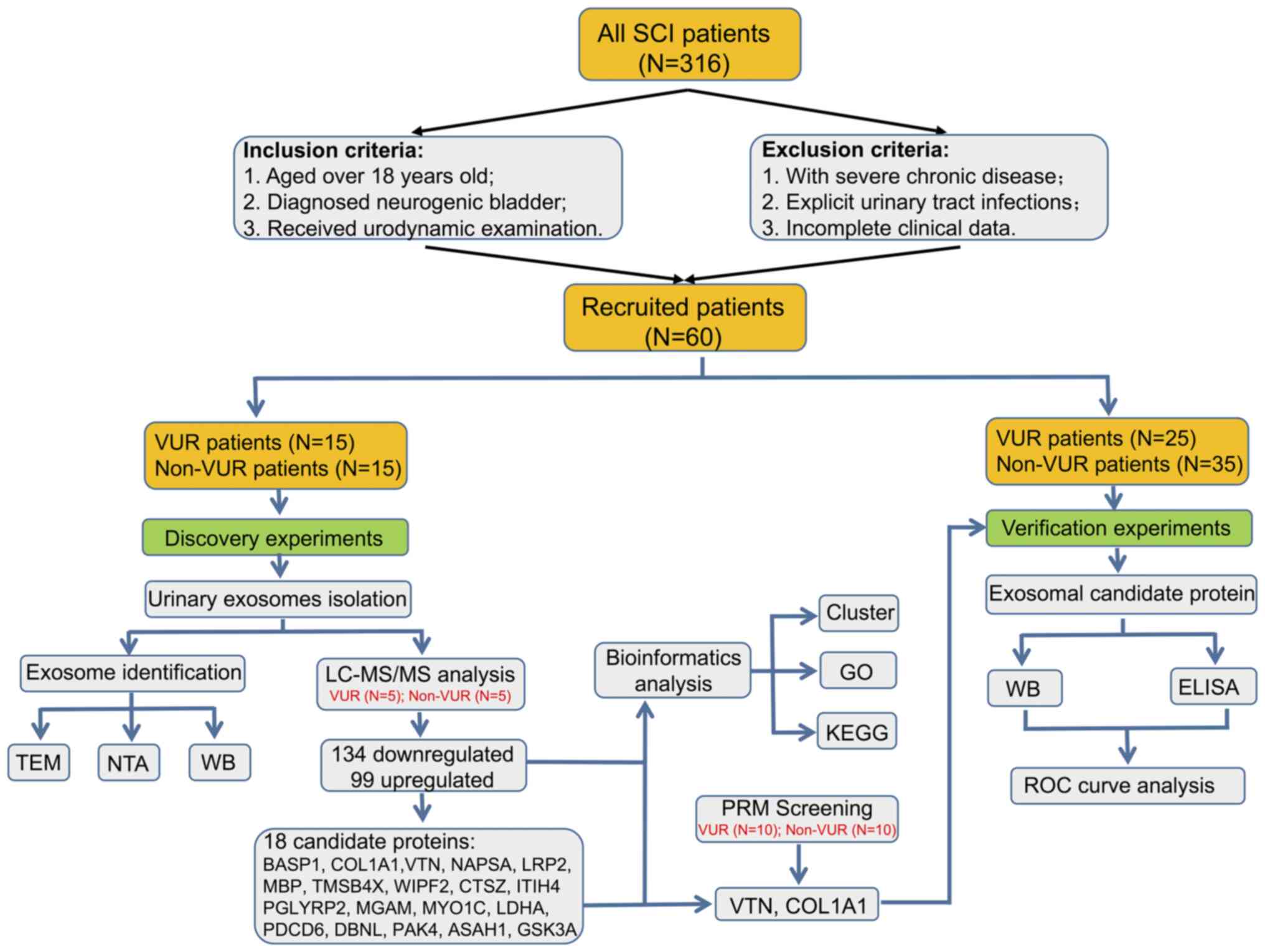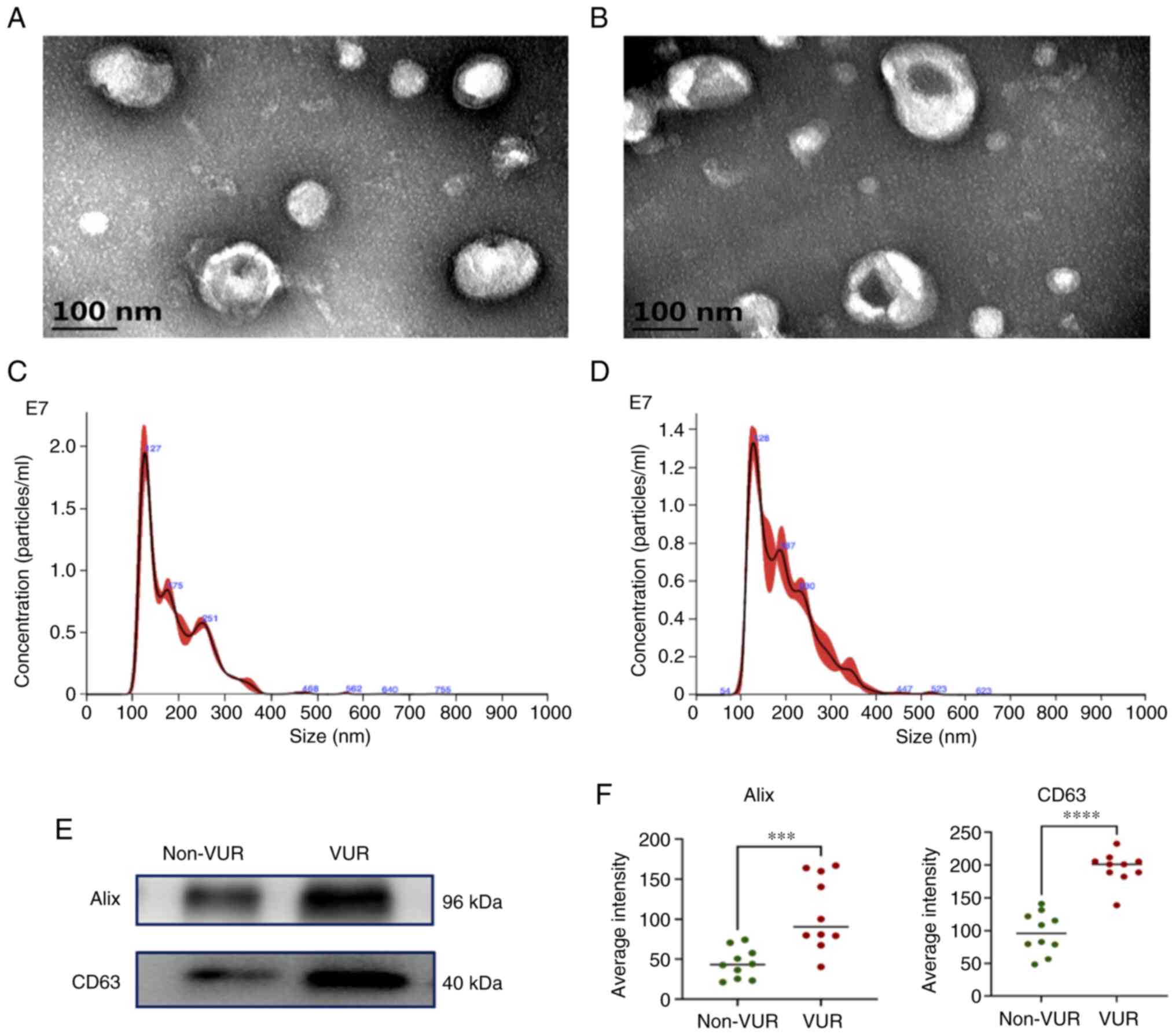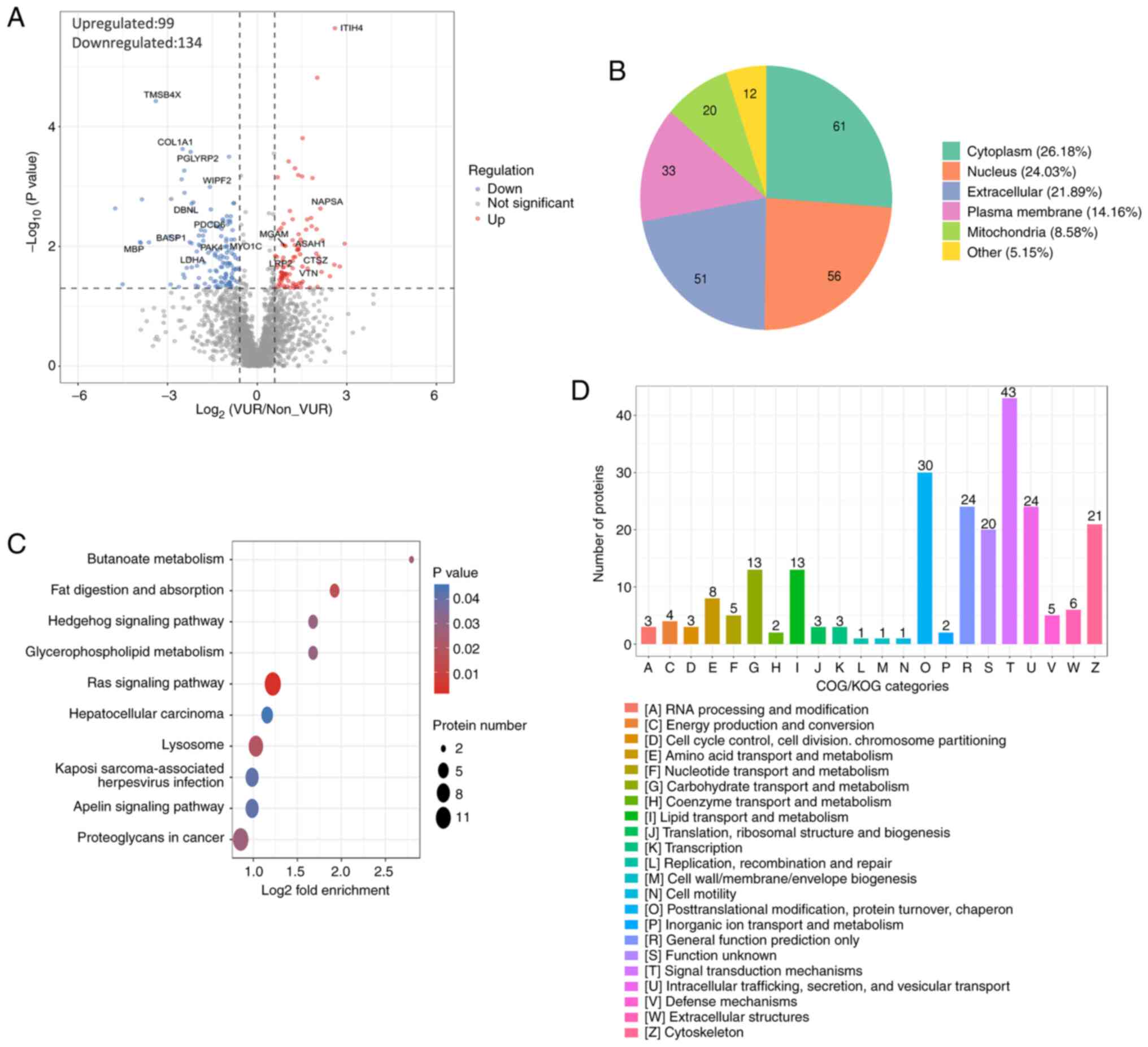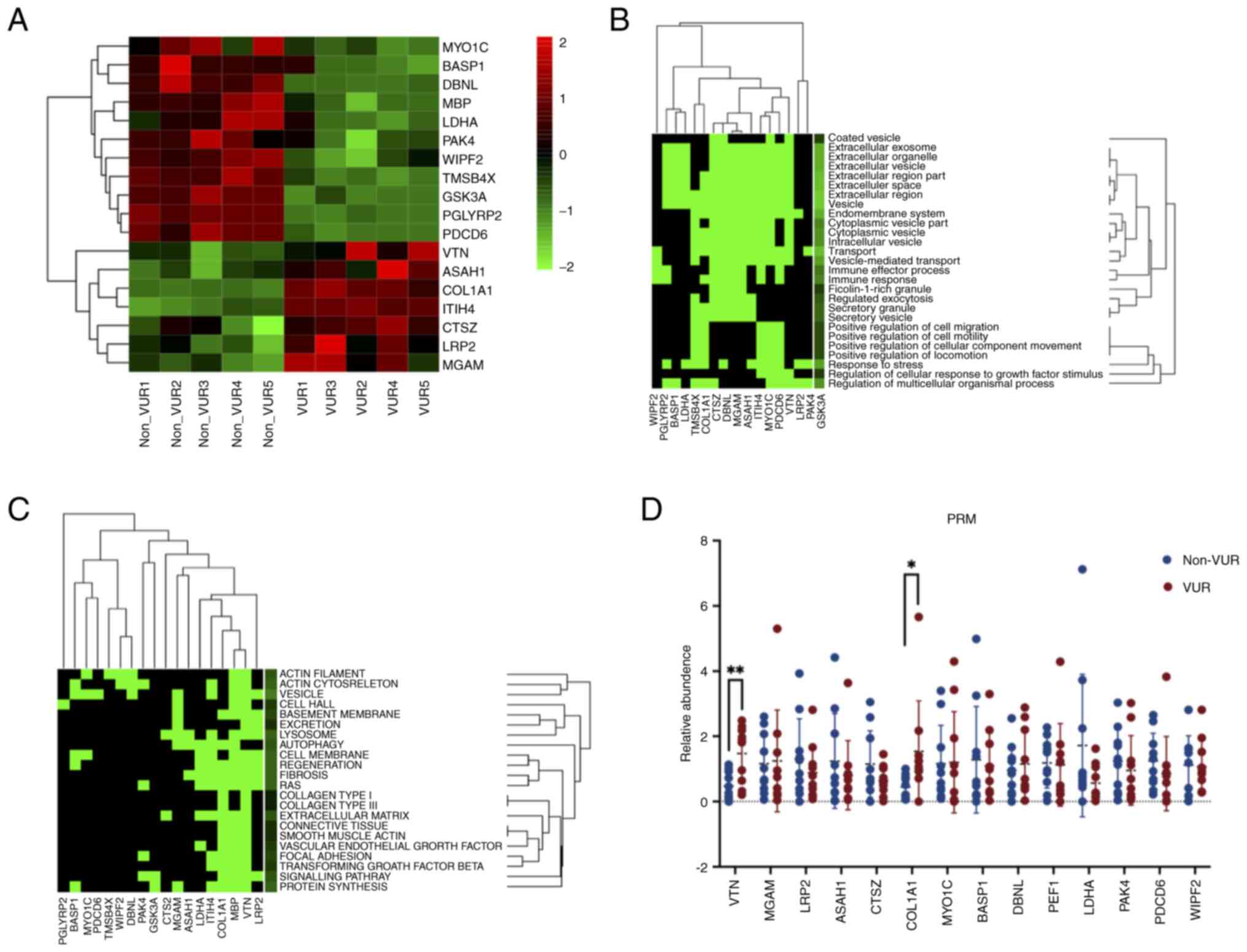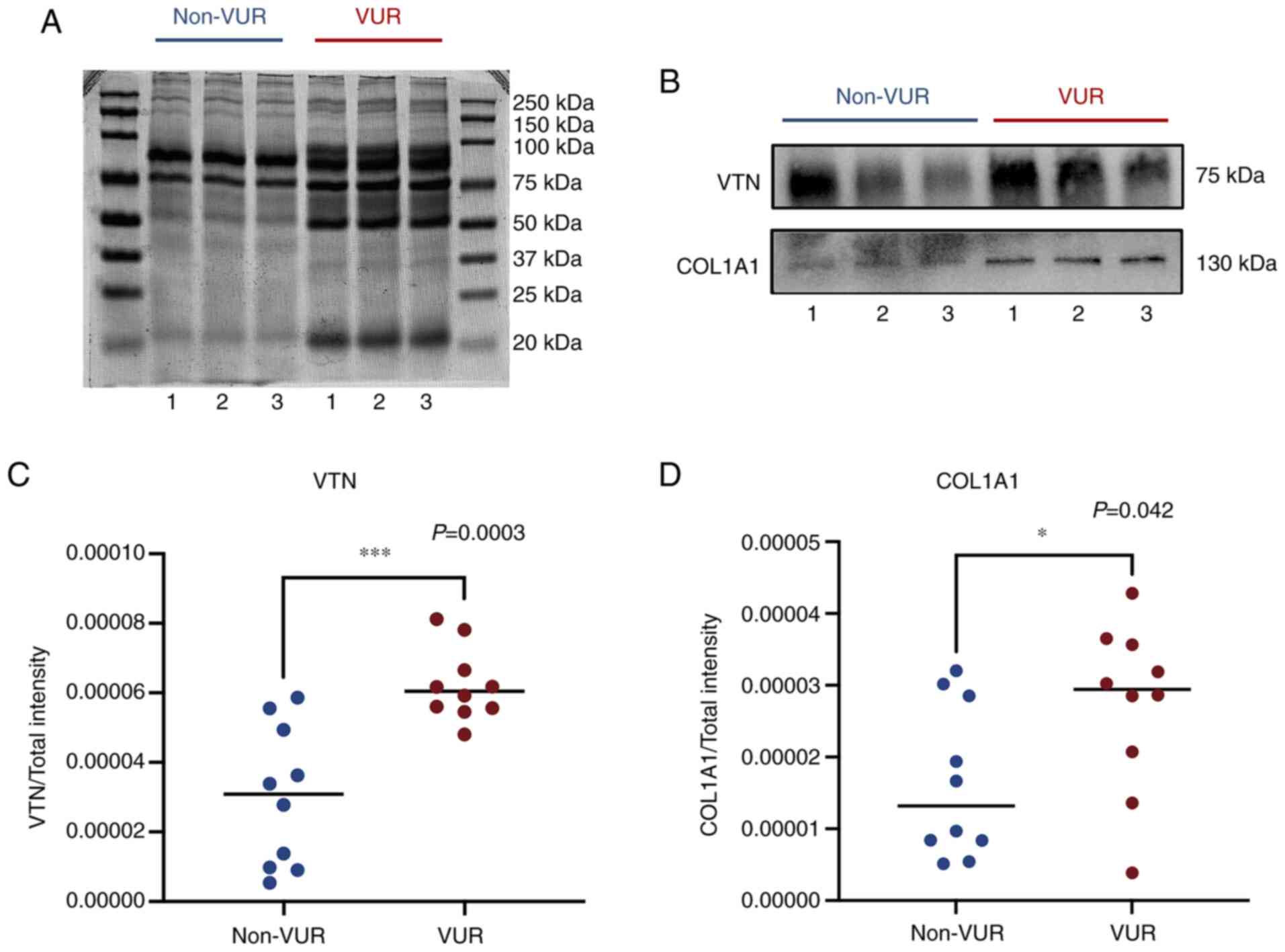|
1
|
Ahuja CS, Wilson JR, Nori S, Kotter MRN,
Druschel C, Curt A and Fehlings MG: Traumatic spinal cord injury.
Nat Rev Dis Primers. 3(17018)2017.PubMed/NCBI View Article : Google Scholar
|
|
2
|
Cristante AF, Barros Filho TE, Marcon RM,
Letaif OB and Rocha ID: Therapeutic approaches for spinal cord
injury. Clinics (Sao Paulo). 67:1219–1224. 2012.PubMed/NCBI View Article : Google Scholar
|
|
3
|
Furlan JC, Noonan V, Singh A and Fehlings
MG: Assessment of impairment in patients with acute traumatic
spinal cord injury: A systematic review of the literature. J
Neurotrauma. 28:1445–1477. 2011.PubMed/NCBI View Article : Google Scholar
|
|
4
|
Noreau L, Noonan VK, Cobb J, Leblond J and
Dumont FS: Spinal cord injury community survey: A national,
comprehensive study to portray the lives of canadians with spinal
cord injury. Top Spinal Cord Inj Rehabil. 20:249–264.
2014.PubMed/NCBI View Article : Google Scholar
|
|
5
|
Dave CN, Khalaf A, Patel HD, Kohn TP and
Burnett AL: Neurogenic bladder is an independent risk factor for
complications associated with inflatable penile prosthesis
implantation. Int J Impot Res. 32:520–524. 2020.PubMed/NCBI View Article : Google Scholar
|
|
6
|
Li LF, Ka-Kit Leung G and Lui WM: Sacral
nerve stimulation for neurogenic bladder. World Neurosurg.
90:236–243. 2016.PubMed/NCBI View Article : Google Scholar
|
|
7
|
Nseyo U and Santiago-Lastra Y: Long-term
complications of the neurogenic bladder. The Urol Clin North Am.
44:355–366. 2017.PubMed/NCBI View Article : Google Scholar
|
|
8
|
Zhang T, Liu H, Liu Z and Wang L:
Acupuncture for neurogenic bladder due to spinal cord injury: A
systematic review protocol. BMJ Open. 4(e006249)2014.PubMed/NCBI View Article : Google Scholar
|
|
9
|
Théry C, Zitvogel L and Amigorena S:
Exosomes: Composition, biogenesis and function. Nat Rev Immunol.
2:569–579. 2002.PubMed/NCBI View
Article : Google Scholar
|
|
10
|
Dai J, Su Y, Zhong S, Cong L, Liu B, Yang
J, Tao Y, He Z, Chen C and Jiang Y: Exosomes: Key players in cancer
and potential therapeutic strategy. Signal Transduct Target Ther.
5(145)2020.PubMed/NCBI View Article : Google Scholar
|
|
11
|
He C, Zheng S, Luo Y and Wang B: Exosome
theranostics: Biology and translational medicine. Theranostics.
8:237–255. 2018.PubMed/NCBI View Article : Google Scholar
|
|
12
|
Chen C, Luo Y, He W, Zhao Y, Kong Y, Liu
H, Zhong G, Li Y, Li J, Huang J, et al: Exosomal long noncoding RNA
LNMAT2 promotes lymphatic metastasis in bladder cancer. J Clin
Invest. 130:404–421. 2020.PubMed/NCBI View Article : Google Scholar
|
|
13
|
Cimadamore A, Gasparrini S, Santoni M,
Cheng L, Lopez-Beltran A, Battelli N, Massari F, Giunchi F,
Fiorentino M, Scarpelli M and Montironi R: Biomarkers of
aggressiveness in genitourinary tumors with emphasis on kidney,
bladder, and prostate cancer. Expert Rev Mol Diagn. 18:645–655.
2018.PubMed/NCBI View Article : Google Scholar
|
|
14
|
Quaglia M, Merlotti G, Guglielmetti G,
Castellano G and Cantaluppi V: Recent advances on biomarkers of
early and late kidney graft dysfunction. Int J Mol Sci.
21(5404)2020.PubMed/NCBI View Article : Google Scholar
|
|
15
|
Dear JW, Street JM and Bailey MA: Urinary
exosomes: A reservoir for biomarker discovery and potential
mediators of intrarenal signalling. Proteomics. 13:1572–1580.
2013.PubMed/NCBI View Article : Google Scholar
|
|
16
|
Zhou H, Pisitkun T, Aponte A, Yuen PS,
Hoffert JD, Yasuda H, Hu X, Chawla L, Shen RF, Knepper MA and Star
RA: Exosomal Fetuin-A identified by proteomics: A novel urinary
biomarker for detecting acute kidney injury. Kidney Int.
70:1847–1857. 2006.PubMed/NCBI View Article : Google Scholar
|
|
17
|
Feng Y, Lv LL, Wu WJ, Li ZL, Chen J, Ni
HF, Zhou LT, Tang TT, Wang FM, Wang B, et al: Urinary exosomes and
exosomal CCL2 mRNA as biomarkers of active histologic injury in IgA
nephropathy. Am J Pathol. 188:2542–2552. 2018.PubMed/NCBI View Article : Google Scholar
|
|
18
|
Mizutani K, Kawakami K, Horie K, Fujita Y,
Kameyama K, Kato T, Nakane K, Tsuchiya T, Yasuda M, Masunaga K, et
al: Urinary exosome as a potential biomarker for urinary tract
infection. Cell Microbiol. 21(e13020)2019.PubMed/NCBI View Article : Google Scholar
|
|
19
|
Roberts TT, Leonard GR and Cepela DJ:
Classifications in brief: American spinal injury association (ASIA)
impairment scale. Clin Orthop Relat Res. 475:1499–1504.
2017.PubMed/NCBI View Article : Google Scholar
|
|
20
|
Wang JH, Zhao LF, Wang HF, Wen YT, Jiang
KK, Mao XM, Zhou ZY, Yao KT, Geng QS, Guo D and Huang ZX: GenCLiP
3: Mining human genes' functions and regulatory networks from
PubMed based on co-occurrences and natural language processing.
Bioinformatics: Nov 4, 2019 (Epub ahead of print).
|
|
21
|
Jeppesen DK, Fenix AM, Franklin JL,
Higginbotham JN, Zhang Q, Zimmerman LJ, Liebler DC, Ping J, Liu Q,
Evans R, et al: Reassessment of exosome composition. Cell.
177:428–445.e18. 2019.PubMed/NCBI View Article : Google Scholar
|
|
22
|
Eaton SL, Roche SL, Llavero Hurtado M,
Oldknow KJ, Farquharson C, Gillingwater TH and Wishart TM: Total
protein analysis as a reliable loading control for quantitative
fluorescent western blotting. PLoS One. 8(e72457)2013.PubMed/NCBI View Article : Google Scholar
|
|
23
|
Wang L, Skotland T, Berge V, Sandvig K and
Llorente A: Exosomal proteins as prostate cancer biomarkers in
urine: From mass spectrometry discovery to immunoassay-based
validation. Eur J Pharm Sci. 98:80–85. 2017.PubMed/NCBI View Article : Google Scholar
|
|
24
|
RStudio Team: RStudio: Integrated
development for R. RStudio, Inc., Boston MA, 2015.
|
|
25
|
Valério FC, Lemos RD, de C Reis AL,
Pimenta LP, Vieira ÉL and Silva ACE: Biomarkers in vesicoureteral
reflux: An overview. Biomark Med. 14:683–696. 2020.PubMed/NCBI View Article : Google Scholar
|
|
26
|
Wu CQ and Franco I: Management of
vesicoureteral reflux in neurogenic bladder. Investig Clin Urol. 58
(Suppl 1):S54–S58. 2017.PubMed/NCBI View Article : Google Scholar
|
|
27
|
Ekiz A, Özdemir-Kumral ZN, Erşahin M,
Tuğtepe H, Öğünç AV, Akakın D, Kıran D, Özsavcı D, Biber N, Hakan
T, et al: Functional and structural changes of the urinary bladder
following spinal cord injury; treatment with alpha lipoic acid.
Neurourol Urodyn. 36:1061–1068. 2017.PubMed/NCBI View Article : Google Scholar
|
|
28
|
Ozsoy O, Ozsoy U, Stein G, Semler O,
Skouras E, Schempf G, Wellmann K, Wirth F, Angelova S, Ankerne J,
et al: Functional deficits and morphological changes in the
neurogenic bladder match the severity of spinal cord compression.
Restor Neurol Neurosci. 30:363–381. 2012.PubMed/NCBI View Article : Google Scholar
|
|
29
|
Hamid R, Averbeck MA, Chiang H, Garcia A,
Al Mousa RT, Oh SJ, Patel A, Plata M and Del Popolo G: Epidemiology
and pathophysiology of neurogenic bladder after spinal cord injury.
World J Urol. 36:1517–1527. 2018.PubMed/NCBI View Article : Google Scholar
|
|
30
|
Ginsberg D: The epidemiology and
pathophysiology of neurogenic bladder. Am J Manag Care. 19 (Suppl
10):s191–s196. 2013.PubMed/NCBI
|
|
31
|
Hu HZ, Granger N and Jeffery ND:
Pathophysiology, clinical importance, and management of neurogenic
lower urinary tract dysfunction caused by suprasacral spinal cord
injury. J Vet Intern Med. 30:1575–1588. 2016.PubMed/NCBI View Article : Google Scholar
|
|
32
|
Compérat E, Reitz A, Delcourt A, Capron F,
Denys P and Chartier-Kastler E: Histologic features in the urinary
bladder wall affected from neurogenic overactivity-a comparison of
inflammation, oedema and fibrosis with and without injection of
botulinum toxin type A. Eur Urol. 50:1058–1064. 2006.PubMed/NCBI View Article : Google Scholar
|
|
33
|
Preissner KT and Reuning U: Vitronectin in
vascular context: Facets of a multitalented matricellular protein.
Semin Thromb Hemost. 37:408–424. 2011.PubMed/NCBI View Article : Google Scholar
|
|
34
|
Madsen CD and Sidenius N: The interaction
between urokinase receptor and vitronectin in cell adhesion and
signalling. Eur J Cell Biol. 87:617–629. 2008.PubMed/NCBI View Article : Google Scholar
|
|
35
|
Naik MU and Naik UP: Junctional adhesion
molecule-A-induced endothelial cell migration on vitronectin is
integrin alpha v beta 3 specific. J Cell Sci. 119:490–499.
2006.PubMed/NCBI View Article : Google Scholar
|
|
36
|
Shen TL, Liu MN, Zhang Q, Feng W, Yu W, Fu
XL and Cai XW: The positive role of vitronectin in radiation
induced lung toxicity: The in vitro and in vivo mechanism study. J
Transl Med. 16(100)2018.PubMed/NCBI View Article : Google Scholar
|
|
37
|
Hayashida M, Hashimoto K, Ishikawa T and
Miyamoto Y: Vitronectin deficiency attenuates hepatic fibrosis in a
non-alcoholic steatohepatitis-induced mouse model. Int J Exp
Pathol. 100:72–82. 2019.PubMed/NCBI View Article : Google Scholar
|
|
38
|
López-Guisa JM, Rassa AC, Cai X, Collins
SJ and Eddy AA: Vitronectin accumulates in the interstitium but
minimally impacts fibrogenesis in experimental chronic kidney
disease. Am J Physiol Renal Physiol. 300:F1244–F1254.
2011.PubMed/NCBI View Article : Google Scholar
|
|
39
|
Carreras-Planella L, Cucchiari D, Cañas L,
Juega J, Franquesa M, Bonet J, Revuelta I, Diekmann F, Taco O,
Lauzurica R and Borràs FE: Urinary vitronectin identifies patients
with high levels of fibrosis in kidney grafts. J Nephrol.
34:861–874. 2021.PubMed/NCBI View Article : Google Scholar
|
|
40
|
Ciregia F, Deroyer C, Cobraiville G,
Plener Z, Malaise O, Gillet P, Fillet M, Malaise MG and de Seny D:
Modulation of αVβ6 integrin in
osteoarthritis-related synovitis and the interaction with
VTN(381-397 a.a.) competing for TGF-β1 activation. Exp
Mol Med. 53:210–222. 2021.PubMed/NCBI View Article : Google Scholar
|
|
41
|
Su J, Morgani SM, David CJ, Wang Q, Er EE,
Huang YH, Basnet H, Zou Y, Shu W, Soni RK, et al: TGF-β
orchestrates fibrogenic and developmental EMTs via the RAS effector
RREB1. Nature. 577:566–571. 2020.PubMed/NCBI View Article : Google Scholar
|
|
42
|
Ma TT and Meng XM: TGF-β/Smad and renal
fibrosis. Adv Exp Med Biol. 1165:347–364. 2019.PubMed/NCBI View Article : Google Scholar
|
|
43
|
Chen Y, Ma Y, He Y, Xing D, Liu E, Yang X,
Zhu W, Wang Q and Wen JG: The TGF-β1 pathway is early involved in
neurogenic bladder fibrosis of juvenile rats. Pediatr Res.
90:759–767. 2021.PubMed/NCBI View Article : Google Scholar
|
|
44
|
Alyaseer AAA, de Lima MHS and Braga TT:
The role of NLRP3 inflammasome activation in the epithelial to
mesenchymal transition process during the fibrosis. Front Immunol.
11(883)2020.PubMed/NCBI View Article : Google Scholar
|
|
45
|
Liu C, Wan X, Gu M, Chen Y, Cai Z, Zhou J,
Chen Q and Wang Z: Effect of sulforaphane on bladder compliance in
a rat model of partial bladder outlet obstruction. Oxid Med Cell
Longev. 2019(6026719)2019.PubMed/NCBI View Article : Google Scholar
|
|
46
|
Kraft M, Oussoren Y, Stewart FA, Dörr W
and Schultz-Hector S: Radiation-induced changes in transforming
growth factor beta and collagen expression in the murine bladder
wall and its correlation with bladder function. Radiat Res.
146:619–627. 1996.PubMed/NCBI
|
|
47
|
Feng YL, Chen DQ, Vaziri ND, Guo Y and
Zhao YY: Small molecule inhibitors of epithelial-mesenchymal
transition for the treatment of cancer and fibrosis. Med Res Rev.
40:54–78. 2020.PubMed/NCBI View Article : Google Scholar
|















